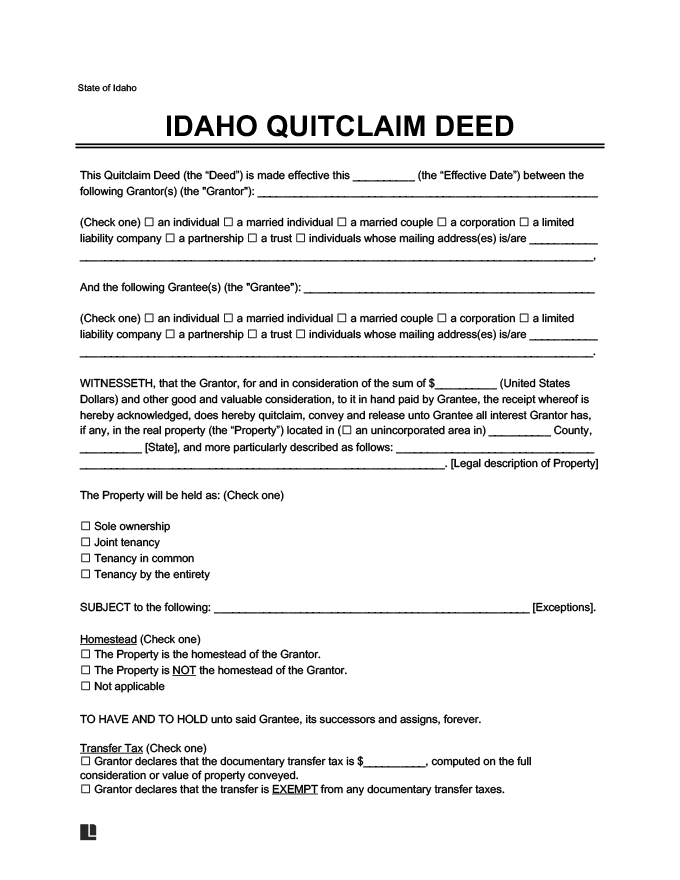Transferring property through a quitclaim deed in Idaho involves a detailed process. The following steps can guide you to ensure the proper filing of your document.
Step 1: Fill in Preparer’s Information
Once you have your form ready, add the preparer’s information, including their address. No state laws prevent the grantor from completing a quitclaim deed themselves, so you can either fill out the form alone or with the help of a professional drafter like a licensed attorney. Either way, the information for whoever fills out the form must be included in the preparer’s section.
Below their details, also write the name and address of the person who will receive the deed after it is recorded. The return address usually belongs to the grantee, but it can be anyone.
Step 2: Note Consideration for the Property
Find the words “sum of,” or similar. Write the amount, if any, that the grantee is paying for the property. Write it with words first, then write the numbers afterward in parentheses with a dollar sign.
Step 3: Enter Grantor and Grantee Information
Write the full name of the grantor and their home address. Include the county, city, and state in that order. Repeat the process for the grantee.
Step 4: Fill in Property Description
Write the county where the property is, this time after the words “located in” or similar.
Add the property’s legal description and include a recording instrument number referencing a related recorded document if applicable. If you need to, attach additional documents. Use the description from the property’s current deed.
Step 5: Sign and Have the Form Notarized
Have the grantor sign the document in the presence of a notary public and have them acknowledge it. The grantee’s signature is optional on this form, as are witness signatures.
Step 6: File the Deed and Wait for Processing
Take the deed to the Idaho County Clerk and Recorder in the county where the property is located for filing. Pay the county’s recording or filing fees.
- Processing times for quitclaim deeds may vary depending on factors like the specific county and the time of year. However, recordation often takes about seven to 10 business days.
- During this time, the county recorder’s office will check that the information provided is complete and accurate. The recorder will then endorse and index the deed, add it to the county’s reception book, and scan it into the system of records.
- Lastly, the original documents will be sent to the address included in the “return to” section of the deed.
